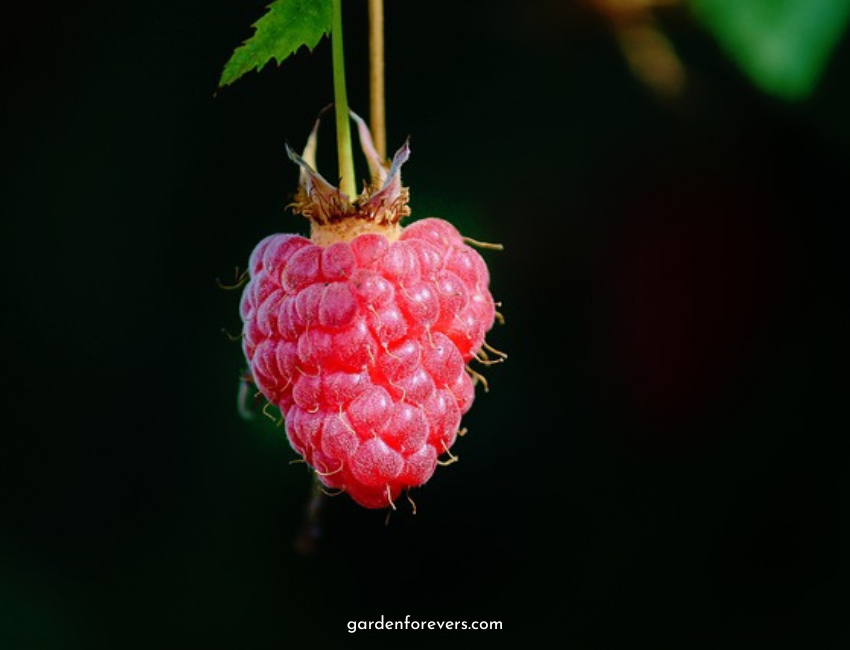How to Grow Raspberries from Seed – A Beginner’s Guide

Have you ever wondered if you could grow raspberries from seed rather than purchasing plants? Maybe you’ve seen beautiful, ripe raspberries at the market and thought, “Could I start my own raspberry patch from scratch?” The good news is that growing raspberries from seed is entirely possible. While it takes a little more patience than buying established plants, it’s a rewarding process and can lead to a unique and thriving raspberry garden.
In this guide, I’ll take you step-by-step through everything you need to know, from gathering and planting raspberry fruit seeds to nurturing your seedlings into strong, fruit-bearing bushes. With a little preparation and care, you’ll be well on your way to enjoying your home-grown raspberries, knowing that you started them from scratch!
So, whether you’re an experienced gardener looking for a new challenge or a novice curious about how long raspberries take to grow from seed, read on to discover all the tips, tricks, and secrets for successful raspberry cultivation.
Why Grow Raspberries from Seed?
Growing raspberries from seed can seem like a slow journey, but it comes with unique benefits:
- Satisfaction: Starting plants from seed gives a greater sense of accomplishment and connection to the plant.
- Variety: You might find unique raspberry varieties that aren’t available as nursery plants.
- Adaptation: Plants grown from seed tend to adapt well to their environment, possibly resulting in stronger, more resilient plants.
Step 1: Preparing to Grow Raspberries from Seed
Before you start planting, there are a few key preparations to make sure your raspberry seeds get the best start possible.
- Gather Raspberry Seeds: You can obtain raspberry seeds from fresh, fully ripe raspberries. Press the raspberries gently to separate the seeds from the flesh, then rinse them thoroughly in water. Allow them to dry on a paper towel for a day or two.
- Stratification: Raspberry seeds need a process called stratification, which is an artificial way of mimicking winter conditions to encourage germination. To stratify raspberry seeds:
- Place the dried seeds in a plastic bag with damp sand or peat moss.
- Refrigerate for 4 to 6 weeks, keeping the temperature around 33-36°F.
This process helps break seed dormancy, boosting their chances of sprouting once planted.
Step 2: Planting Raspberry Seeds
Now that your seeds are stratified, it’s time to plant them!
- Prepare a Seed Tray: Fill a seed tray with seed-starting soil. Seed-starting soil is light and drains well, making it ideal for young seedlings.
- Sow the Seeds: Place each seed about ¼ inch deep in the soil, and cover lightly.
- Water Gently: Water the tray lightly to moisten the soil without washing the seeds away.
- Place in a Warm Location: Raspberry seeds germinate best at temperatures around 70°F. Place the tray in a warm, sunny spot or use a heat mat if you’re growing indoors in a cooler season.
- Cover for Humidity: You can cover the tray with plastic wrap to maintain humidity, but remove it periodically to prevent mold.
Step 3: Germinating Raspberry Seeds
Once your raspberry seeds are planted, it’s all about maintaining the right conditions for them to sprout.
- Patience Is Key: Raspberry seeds take time to germinate. Depending on conditions, germination can take between 2-8 weeks.
- Water Regularly: Keep the soil consistently moist but not waterlogged.
- Provide Light: Once the seeds sprout, ensure they receive plenty of indirect sunlight. If growing indoors, consider using a grow light to ensure they have adequate light each day.
Step 4: Transplanting Raspberry Seedlings
When your seedlings have grown 2-3 sets of leaves and are strong enough to handle, it’s time to move them to a larger pot or directly to the garden.
- Choose the Right Spot: Raspberries love full sun but can tolerate partial shade. They also need good airflow to prevent disease.
- Soil Preparation: Prepare your garden bed with well-draining soil, rich in organic matter. Adding compost or aged manure can help enrich the soil.
- Plant Carefully: Dig small holes for each seedling, spacing them at least 18-24 inches apart to allow room for growth. Place each seedling in a hole, cover with soil, and water well.
Related
Step 5: Nurturing Your Raspberry Plants
Once transplanted, raspberries need a bit of ongoing care to thrive. Here’s how to help your plants grow strong and healthy:
- Watering: Water raspberries deeply, especially during dry periods. They prefer about an inch of water per week.
- Mulching: Apply mulch around the base to retain moisture and prevent weeds.
- Fertilizing: Apply a balanced fertilizer in early spring and again in late summer.
- Pruning: Pruning keeps your plants healthy and encourages new growth. Cut back any dead or weak canes after the first year.
How Long Do Raspberries Take to Grow from Seed?
Growing raspberries from seed takes patience. Here’s an estimated timeline:
- Germination: 2-8 weeks after planting
- First Growth Season: Expect foliage and root development in the first year. Fruiting generally doesn’t happen in the first season, as raspberries focus on establishing strong roots.
- Second Growth Season: Raspberries often begin fruiting in their second year, though some varieties may take longer.
By the end of the second or third year, your plants should produce their first harvest of delicious raspberries!
Common Issues When Growing Raspberries from Seed
Slow or Inconsistent Germination: Stratifying seeds properly helps, but remember, even with care, some seeds won’t germinate.
- Pests: Watch for common pests like aphids and spider mites. Regularly inspect plants and use organic insecticidal soap if needed.
- Diseases: Raspberries can be prone to fungal diseases. Ensure good airflow and avoid overhead watering.
As you can see, growing raspberries from seed is a journey that requires patience and care, but it’s immensely rewarding. With each stage, from planting to harvesting, you’ll have the satisfaction of nurturing your raspberries from tiny seeds into vibrant, fruit-bearing plants. Whether you’re a gardening enthusiast looking to try something new or simply in love with the idea of homegrown raspberries, this guide has everything you need to start your raspberry patch from scratch.
FAQs on Growing Raspberries from Seed
Can I grow raspberries indoors?
Answer: Yes, you can start raspberry seeds indoors, but they need to be transplanted outside to thrive in the long term.
What’s the best season to start growing raspberry seeds?
Answer: Early spring is ideal, as the seeds will be ready to germinate by summer and grow through the warm months.
Do raspberries need full sun?
Answer: Yes, raspberries grow best with at least 6 hours of sunlight daily, though they can tolerate partial shade.
How long does it take to see fruit?
Answer: Typically, raspberries grown from seed start fruiting in their second or third year, depending on variety and care.















